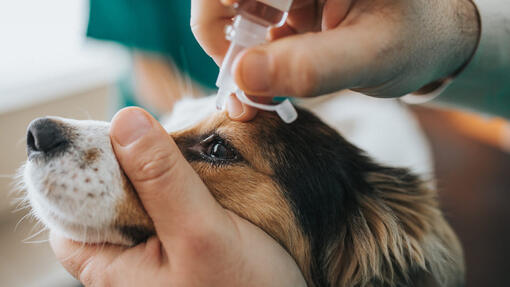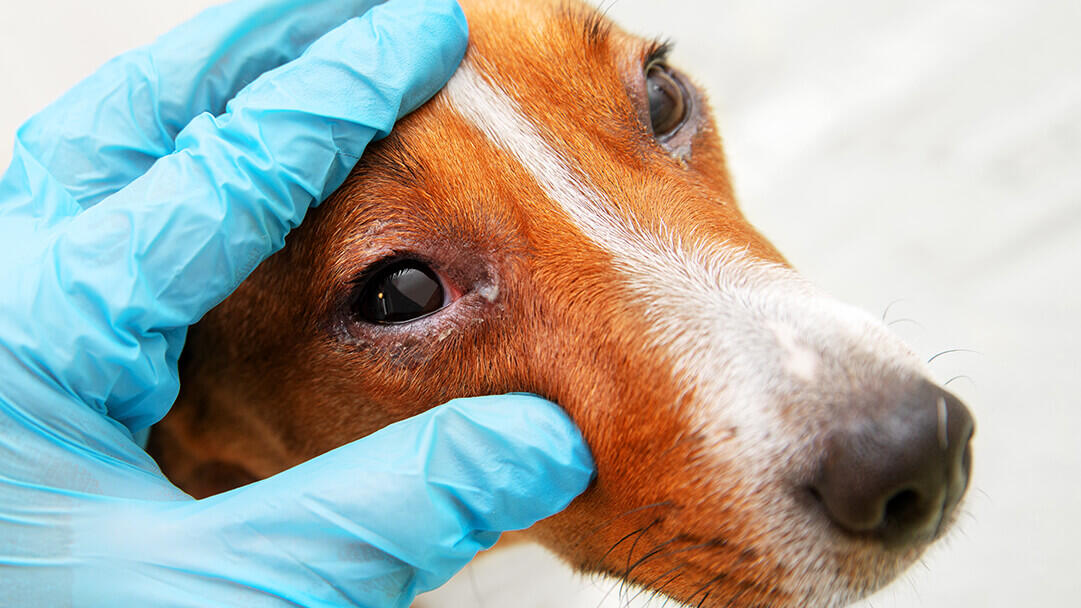Dog Eye Infections: Symptoms and Treatments

Dog’s eyes can become affected by infections just like ours. Vision is such a precious sense, so it is always best to err on the side of caution if you suspect your dog has a problem with their eyes. Sometimes dog eye infections seem to appear out of nowhere and can become uncomfortable pretty quickly.
You might notice your dog pawing at their eye trying to find relief from the discomfort. Or you might discover redness accompanied by an unusual discharge in that area. Either way, it is time to call the vet and ask for their advice. Here is what you should look out for when it comes to your dog’s eye health.
What are the most common types of eye infections in dogs?
There are different ways for an eye infection to affect your pup. Sometimes it will manifest as an inflammation of the membrane that lines the outer portion of the eyeball, in which case it is called canine conjunctivitis. If structures within the eye itself, such as the iris are affected, it is termed uveitis. The cornea can become inflamed and infected too – this is termed keratitis.
So what signs should owners look out for? Keep reading to discover the main symptoms of dog eye infections.
Dog eye infection symptoms
The most common signs that your pet is struggling with an eye infection include:
- Swelling around the eye
- Eye redness
- Eye discharge: this can be watery, white, reddish-brown, yellow or green
- Excessive blinking or squinting
- Light sensitivity
- Pawing at the affected eye
It is important to contact your vet as soon as you notice any of these symptoms. Although eye infections in dogs are not life threatening, they are very uncomfortable and could point to underlying health conditions that need to be solved. Just as importantly, many eye problems that seem trivial can permanently affect your dog’s eyesight if left untreated. So, don’t hesitate to ask for your vet’s help and advice as soon as you notice any unusual signs.
What are the causes of eye infections in dogs?
Although a virus or bacteria on its own can cause eye infections in dogs, often there will be another factor that has predisposed the eye to infection. Here is a list of the most common causes of eye infections in dogs:
- Bacterial infections
- Viral infections
- Allergies
- Trauma to the eye
- Foreign bodies e.g., grass seeds
- Tumours
- Fungus
- Irritants such as dust or smoke
- Other eye disease such as dry eye or Glaucoma in dogs
- Eye abnormalities such as cherry eye
Many eye problems in dogs are not contagious. However, it is always best to assume you are dealing with a contagious eye issue and limit the contact between the pets in the household until your dog has had a vet check.
Dog eye infection treatment
It is often worrying to notice your dog’s eyes being affected by redness or unusual discharges. But luckily there are many available treatments for dog eye infections, so chances are your pup will be back to normal relatively soon, as long as you take them to the vet when the first signs of trouble show up.
The treatment your vet will recommend depends on the type of eye infection or eye problem they discover. Antibiotics are prescribed for bacterial infections, while antihistamines or other anti-inflammatories may be better suited to help a pup dealing with eye problems caused by allergies.
In other cases, surgery might be necessary to resolve eyelash abnormalities or blocked tear ducts, for example.
Can dog eye infections be prevented?
Dogs love exploring their surroundings, so keeping them and their eyes safe from dangers can be a difficult task for even the most dedicated owners. Fortunately, your dog’s eyelids and eyelashes do a pretty good job of protecting the delicate eye underneath. However, if your dog frequently suffers with eye infections there are several measures you can take.
Talk to your vet about the benefits of keeping the hair around their eyes short to avoid irritation (although in many cases, this actually protects your dog’s eyes. If your vet thinks this is a good idea, seek professional help with this and avoid using scissors close to your pet’s eyes.
There are dog goggles available but in all but the most serious cases, these are best avoided as they can be uncomfortable, restrict your dog’s field of vision, and most dogs really don’t enjoy wearing them.
Next, find out more about the top causes of red eyes in dogs and explore the amazing ways in which our pets see the world, with our article full of surprising facts about dog vision.


















